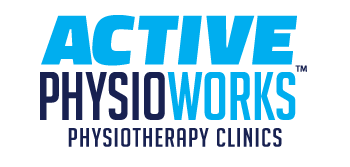Don't fear the tear!
May 20, 2019
Have you recently been diagnosed with a rotator cuff tear? Do you feel as though you’ll need to get it stitched up by a surgeon as soon as possible to gain use of your shoulder again? Maybe not!
The rotator cuff (RC) is a group of 4 muscles that originate in the shoulder blade and attach to the head of the humerus, or upper arm bone (Figure 1). It is the primary stabilizer of the shoulder joint and is pertinent for shoulder function1, both everyday activates and high-level athletes like baseball pitchers and volleyball players. Rotator cuff tears are typically diagnosed with magnetic resonance imaging (MRI) (Figure 2) or ultrasound imaging (US), both of which are very accurate2 and can be requested by some of the physios at Active Physio Works.


The thing that most people don’t know about RC tears are that they can be asymptomatic, meaning they don’t cause pain or other symptoms. The prevalence of asymptomatic partial and full thickness RC tears has been shown to be as high as 50% in people older than 60 years, and 80% in people older than 803. Other studies have shown that tears become more prevalent with age starting as early as your 40’s4
So, what does this mean? It means that damage to muscles or tendons don’t always equal pain, but rather these tears or degenerative changes are just normal changes in the body (Figure 3)!

Now, although many people with RC tears can be asymptomatic, several factors can lead them to become painful, or symptomatic3.
- Age is the greatest predictive factor of having a painful RC tear with older people having a greater chance of developing a painful RC tear compared to younger people.
- The size of the tear increases the chance of developing pain, where full thickness tears are at a greater risk of causing pain than a partial thickness tear.
- Other factors like genetics, smoking, high cholesterol, and diabetes have all shown to be risk factors for developing a painful RC tear.
So, when do you know to go with physical therapy or surgery? As of right now, the best indicators a summarized in table 1.
|
Physical Therapy |
Surgery |
|
|
Even with these factors taken into consideration, nothing can replace a thorough physical examination and history because everyone’s situation is unique. To find out if physical therapy can help you, visit your nearest Active Physio Works clinic location in Edmonton, St. Albert and Fort Saskatchewan for an assessment and treatment today!
Please add your bio info through your member profile page, or through your dashboard.

